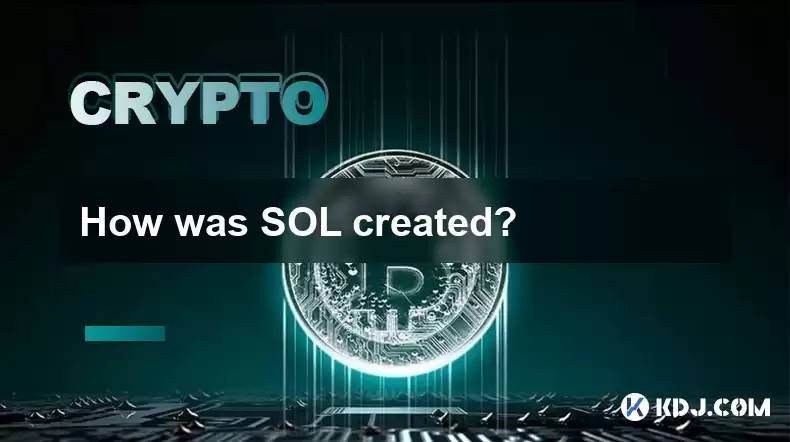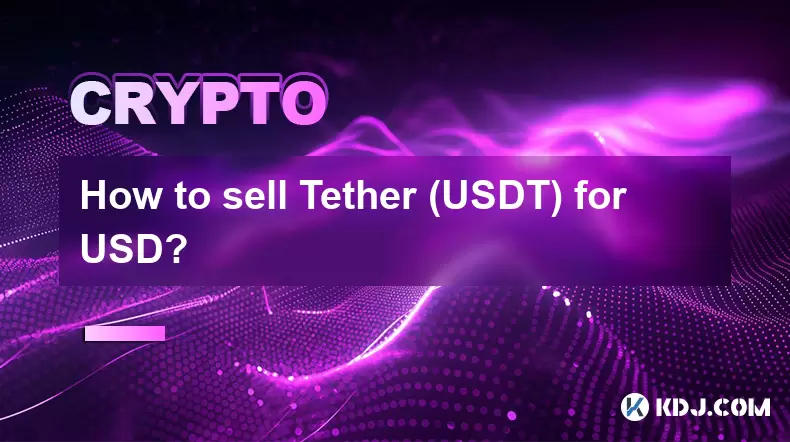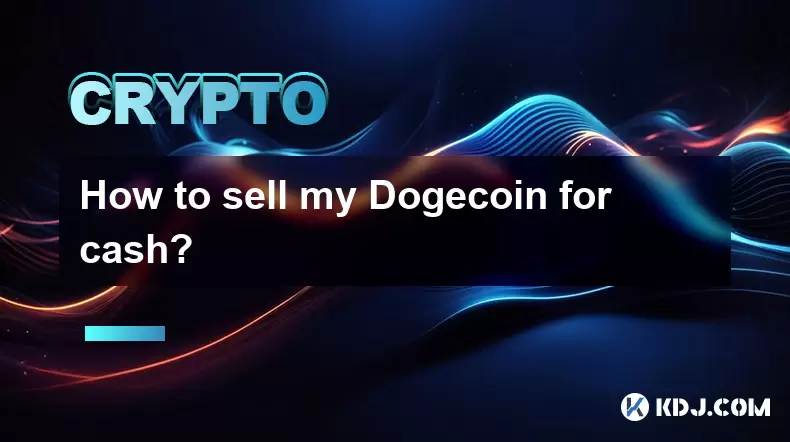-
 Bitcoin
Bitcoin $115100
1.27% -
 Ethereum
Ethereum $3675
2.71% -
 XRP
XRP $2.995
1.45% -
 Tether USDt
Tether USDt $1.000
0.02% -
 BNB
BNB $769.8
2.64% -
 Solana
Solana $168.0
3.25% -
 USDC
USDC $0.9999
-0.01% -
 TRON
TRON $0.3371
1.48% -
 Dogecoin
Dogecoin $0.2051
3.36% -
 Cardano
Cardano $0.7394
2.30% -
 Hyperliquid
Hyperliquid $38.15
0.42% -
 Stellar
Stellar $0.3966
-0.36% -
 Sui
Sui $3.486
2.93% -
 Chainlink
Chainlink $16.72
2.52% -
 Bitcoin Cash
Bitcoin Cash $568.0
4.36% -
 Hedera
Hedera $0.2440
2.59% -
 Ethena USDe
Ethena USDe $1.001
0.04% -
 Avalanche
Avalanche $22.16
2.06% -
 Litecoin
Litecoin $119.1
-0.73% -
 UNUS SED LEO
UNUS SED LEO $8.991
0.04% -
 Toncoin
Toncoin $3.232
-0.39% -
 Shiba Inu
Shiba Inu $0.00001233
2.82% -
 Uniswap
Uniswap $9.717
2.53% -
 Polkadot
Polkadot $3.664
1.85% -
 Dai
Dai $1.000
0.01% -
 Monero
Monero $281.2
-3.89% -
 Bitget Token
Bitget Token $4.350
1.55% -
 Cronos
Cronos $0.1428
5.07% -
 Pepe
Pepe $0.00001050
3.68% -
 Aave
Aave $262.3
3.54%
How was SOL created?
Solana's SOL token emerged from a process involving Anatoly Yakovenko's innovative blockchain design, team development, funding rounds, and early contributor rewards, all overseen by the Solana Foundation.
Mar 20, 2025 at 11:50 pm

Key Points:
- Solana's creation stemmed from a perceived need for a faster, more scalable blockchain than existing solutions.
- Anatoly Yakovenko, the brains behind Solana, designed it to leverage a novel consensus mechanism and a unique architecture.
- The initial development involved a team of engineers and researchers, attracting further investment and community support over time.
- SOL tokens were initially distributed through a combination of funding rounds, rewards for early contributors, and staking incentives.
- The Solana Foundation plays a crucial role in governance and development.
How Was SOL Created? A Deep Dive into Solana's Genesis
Solana, with its native cryptocurrency SOL, didn't emerge overnight. Its creation was a carefully orchestrated process involving innovative technology, strategic planning, and a dedicated team. The genesis story starts with Anatoly Yakovenko, who identified limitations in existing blockchain technologies, particularly regarding scalability and transaction speed. He envisioned a blockchain capable of handling a far greater volume of transactions per second than anything available at the time. This vision formed the foundation for Solana.
Yakovenko's solution involved a novel approach to consensus. Unlike Bitcoin's proof-of-work or Ethereum's initial proof-of-stake, Solana utilizes a hybrid consensus mechanism called Proof-of-History (PoH). PoH uses cryptographic techniques to create a verifiable, chronologically ordered chain of events, greatly improving transaction throughput and reducing latency. This innovative mechanism is at the heart of Solana's superior speed.
The creation of Solana also involved a carefully constructed architecture. It leverages a combination of technologies, including a unique clock synchronization mechanism, to ensure efficient and reliable communication between nodes. This intricate architecture, built upon years of research and development, allows Solana to achieve its impressive transaction speeds.
Building Solana wasn't a solo effort. Yakovenko assembled a team of experienced engineers and researchers, each contributing their expertise to various aspects of the project. This team, coupled with ongoing contributions from the community, has been instrumental in Solana's growth and evolution. The initial development phase included extensive testing and refinement to ensure the blockchain's stability and security.
The SOL token itself didn't simply appear. Its creation was tied to the project's development and growth. The initial distribution involved several strategies. There were private and public funding rounds where investors received SOL tokens in exchange for their capital. Early contributors to the project were also rewarded with SOL, incentivizing participation and development. Furthermore, staking incentives were implemented, rewarding users for securing the network and participating in governance.
The Solana Foundation plays a vital role in the ongoing development and governance of the Solana ecosystem. It oversees the allocation of resources, manages the project roadmap, and fosters community growth. This centralized governance structure, while debated within the crypto community, has been a significant factor in Solana's relatively rapid expansion. The foundation's actions influence the direction of the platform and the value of the SOL token.
The process of creating Solana wasn't limited to simply writing code. It involved securing funding, attracting talented developers, and building a strong community around the project. This involved significant efforts in marketing, community engagement, and partnerships with other organizations within the blockchain space.
Solana's creation wasn't just about technological innovation; it was a holistic effort that encompassed several critical aspects of blockchain development. From the initial conceptualization to the ongoing maintenance and development, it represents a multifaceted undertaking requiring collaboration, innovation, and strategic planning.
The continued evolution of Solana involves constant improvement and adaptation to the ever-changing landscape of the cryptocurrency world. This includes ongoing development of the blockchain, improvements to the consensus mechanism, and a continuous effort to enhance security and scalability. The Solana Foundation continues to play a central role in guiding this evolution.
Frequently Asked Questions:
Q: What makes Solana's technology unique?
A: Solana's uniqueness lies in its Proof-of-History (PoH) consensus mechanism, combined with its innovative architecture. PoH significantly improves transaction speeds and scalability compared to traditional methods.
Q: Who is behind Solana's development?
A: Solana's initial development was led by Anatoly Yakovenko, but it's a collaborative effort involving a large team of engineers and researchers, as well as the active Solana community.
Q: How were SOL tokens initially distributed?
A: The initial distribution of SOL involved funding rounds, rewards for early contributors and developers, and incentives for staking. The distribution strategy aimed to incentivize participation in the network.
Q: What role does the Solana Foundation play?
A: The Solana Foundation plays a significant role in governing and overseeing the Solana ecosystem, including resource allocation, development roadmap, and community engagement.
Q: What are the key challenges Solana faces?
A: While Solana boasts impressive speed and scalability, it faces challenges like network outages, centralization concerns related to the Foundation's influence, and ongoing competition from other layer-1 blockchains.
Q: Is SOL a good investment?
A: Whether SOL is a "good" investment depends on individual risk tolerance and market analysis. Like all cryptocurrencies, SOL is volatile and subject to market fluctuations. Independent research is essential before making any investment decisions.
Disclaimer:info@kdj.com
The information provided is not trading advice. kdj.com does not assume any responsibility for any investments made based on the information provided in this article. Cryptocurrencies are highly volatile and it is highly recommended that you invest with caution after thorough research!
If you believe that the content used on this website infringes your copyright, please contact us immediately (info@kdj.com) and we will delete it promptly.
- HashFlare Founders Face the Music: Jail Time Looms?
- 2025-08-07 14:30:12
- Pepeto's Pounce: Meme Coin Mania Meets Blockchain Infrastructure
- 2025-08-07 15:10:12
- Parataxis, SPAC Merger, and Bitcoin Treasury: A New York Minute on Crypto's Latest Moves
- 2025-08-07 15:30:12
- Toshi on Binance.US: A Memecoin's Big Break
- 2025-08-07 14:30:12
- Bitcoin, SPAC Mergers, and Parataxis: A New Yorker's Take on Crypto's Wall Street Moment
- 2025-08-07 14:50:27
- Bitcoin, Collateral, and Loan Strategies: A New York Minute on the Future of Finance
- 2025-08-07 14:50:27
Related knowledge

How to sell Tether (USDT) for USD?
Aug 07,2025 at 03:29pm
Understanding Tether (USDT) and Its USD ValueTether (USDT) is a stablecoin designed to maintain a 1:1 value ratio with the United States Dollar (USD)....

How to sell my Bitcoincoin for cash?
Aug 07,2025 at 02:14pm
Understanding the Basics of Selling Dogecoin for CashSelling Dogecoin for cash involves converting your DOGE tokens into a fiat currency such as USD, ...

What is Chainlink (LINK)?
Jul 22,2025 at 02:14am
Understanding Chainlink (LINK): The Decentralized Oracle NetworkChainlink is a decentralized oracle network designed to bridge the gap between blockch...

What is Avalanche (AVAX)?
Jul 22,2025 at 08:35am
What is Avalanche (AVAX)?Avalanche (AVAX) is a decentralized, open-source blockchain platform designed to support high-performance decentralized appli...

What is Polkadot (DOT)?
Jul 19,2025 at 06:35pm
Understanding the Basics of Polkadot (DOT)Polkadot (DOT) is a multi-chain network protocol designed to enable different blockchains to transfer messag...

What is Litecoin (LTC)?
Jul 23,2025 at 11:35am
Overview of Litecoin (LTC)Litecoin (LTC) is a peer-to-peer cryptocurrency that was created in 2011 by Charlie Lee, a former Google engineer. It is oft...

How to sell Tether (USDT) for USD?
Aug 07,2025 at 03:29pm
Understanding Tether (USDT) and Its USD ValueTether (USDT) is a stablecoin designed to maintain a 1:1 value ratio with the United States Dollar (USD)....

How to sell my Bitcoincoin for cash?
Aug 07,2025 at 02:14pm
Understanding the Basics of Selling Dogecoin for CashSelling Dogecoin for cash involves converting your DOGE tokens into a fiat currency such as USD, ...

What is Chainlink (LINK)?
Jul 22,2025 at 02:14am
Understanding Chainlink (LINK): The Decentralized Oracle NetworkChainlink is a decentralized oracle network designed to bridge the gap between blockch...

What is Avalanche (AVAX)?
Jul 22,2025 at 08:35am
What is Avalanche (AVAX)?Avalanche (AVAX) is a decentralized, open-source blockchain platform designed to support high-performance decentralized appli...

What is Polkadot (DOT)?
Jul 19,2025 at 06:35pm
Understanding the Basics of Polkadot (DOT)Polkadot (DOT) is a multi-chain network protocol designed to enable different blockchains to transfer messag...

What is Litecoin (LTC)?
Jul 23,2025 at 11:35am
Overview of Litecoin (LTC)Litecoin (LTC) is a peer-to-peer cryptocurrency that was created in 2011 by Charlie Lee, a former Google engineer. It is oft...
See all articles

























































































